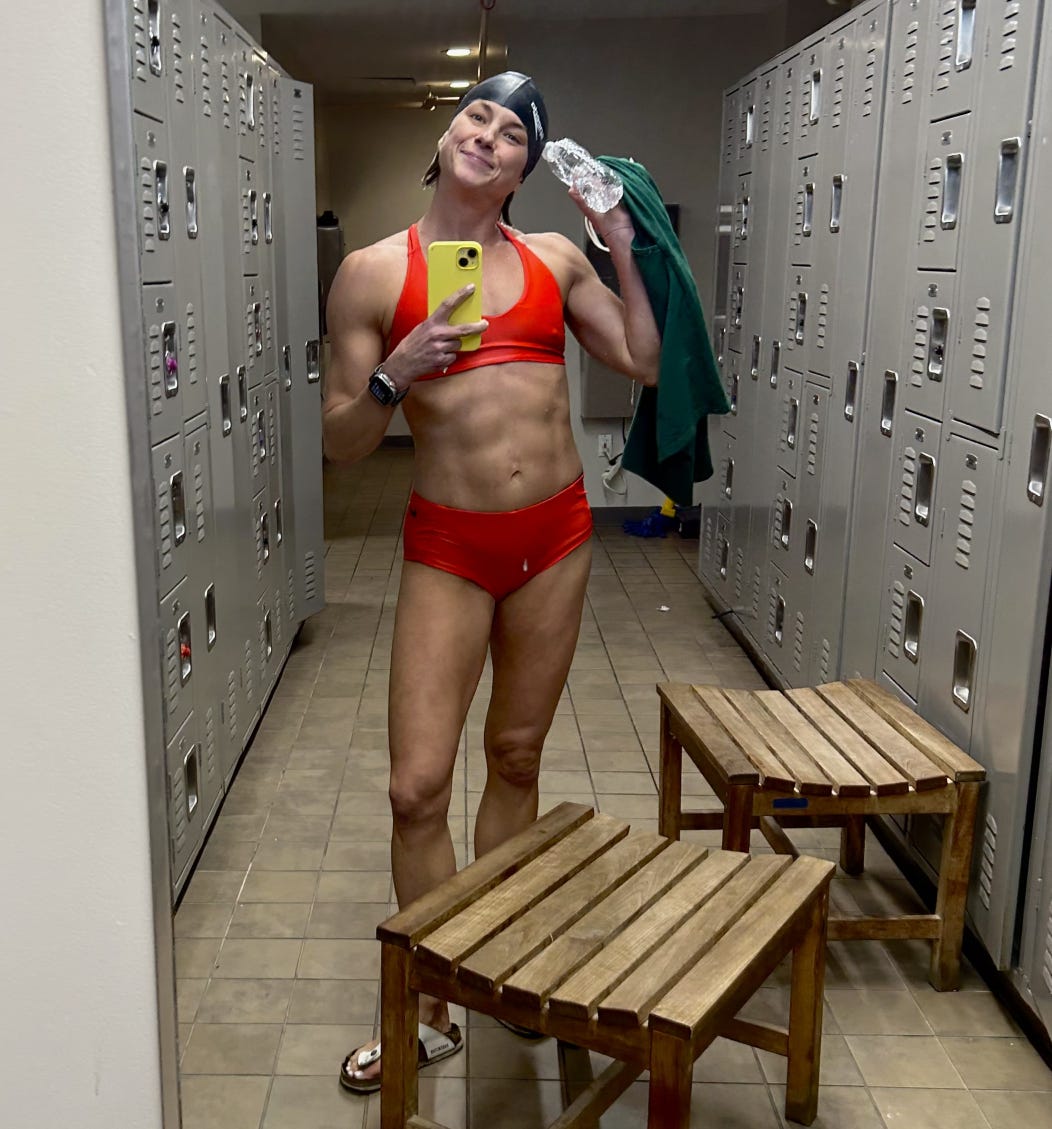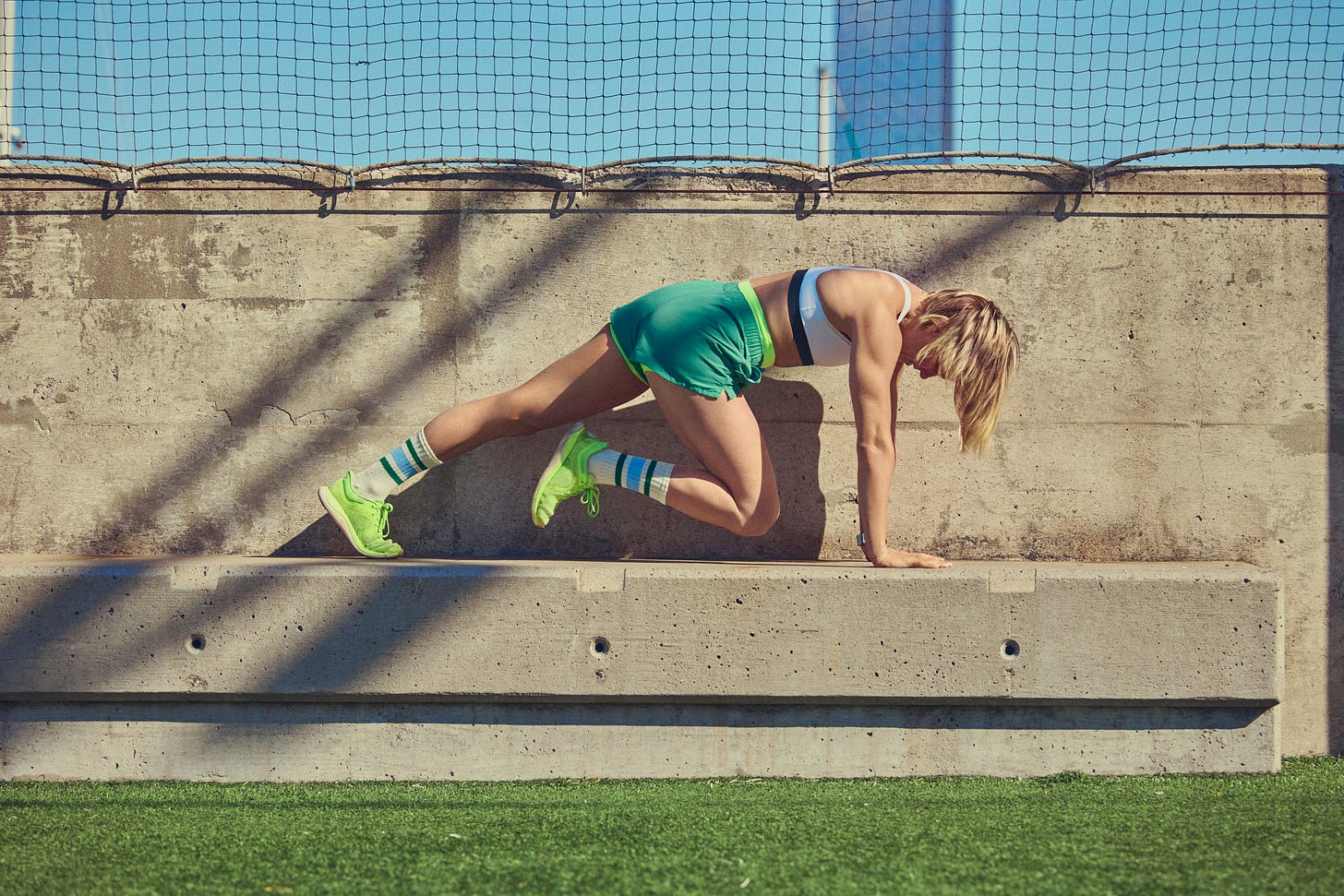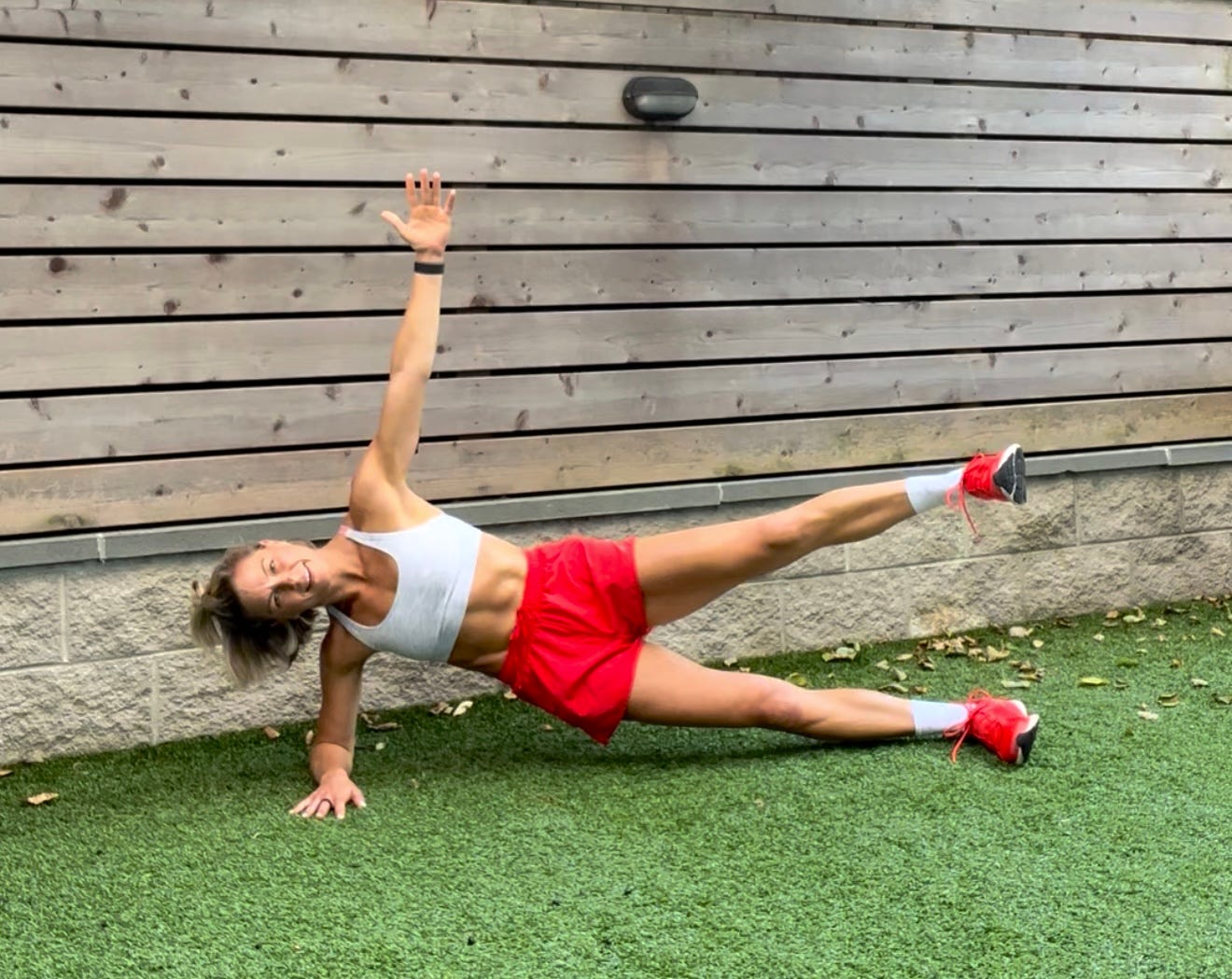Exactly How I Scored Visible Abs At 43-Years-Old
My two-week playbook to build core strength, amp up energy and move better in every part of life.
As I was digging through my photo library for this post, I realized I’ve documented my core-training journey more thoroughly than almost anything else in my fitness life. When you act like a goof at the gym and film your sets for accountability and form checks (and, yes, Instagram), that’s what happens.
Before we go further, an important note: You do not need a six-pack of abs to have a strong core. Full stop. In fact, if it’s a topic that stirs up discomfort for you, feel free to skip this post and come back for the next one. But if you’re curious about the connection between core strength and energy, posture, performance, and yes, even definition, then I hope my story and the strategies I personally used will meet you where you are.
I learned in my 40s that abs are not sorcery.
I’ve been active my whole life. Sports as a kid, competitive athlete in high school, marathoner, triathlete, gym-lover. But I didn’t see actual abs definition—despite always having a strong core—until I was 43.
Postpartum, post-skiing accident, and deep into midlife, I assumed visible abs just weren’t in the cards for me genetically. Then I shifted my habits. I began to prioritize protein, got smarter about supplements, lifted heavier, sprinted occasionally, and incorporated progressive, weighted core work. My body changed…and my abs visibly emerged.

The research is clear.
You’ve probably heard you can’t spot-reduce fat. That’s mostly true—but emerging studies suggest that targeted work (like abs training) may lead to some regional fat loss, likely thanks to localized blood flow and increased energy use. The effect is small, but real. The bigger win comes from smart strength training, sprint intervals, and protein-forward nutrition.
Progressive overload—using weight or resistance—is more effective than endless bodyweight crunches.
Crunches primarily target the rectus abdominis, the superficial “six-pack” muscle. While a good complement for developing this area, they offer limited engagement of the deep core muscles (transversus abdominis and multifidus), which are crucial for spinal stability and overall core strength. That’s why this plan includes moves that engage your deep core.
Sprint intervals and high-output efforts increase metabolic output and lean body mass.
Prioritizing protein and getting consistent with nutrition helps you achieve visible abs.
My playbook works.
The plan I personally used is after the jump for Gold Star readers; it includes protein-forward nutritional guidance, answers the most common questions about core strength that I get in my DMs, plus a detailed, day-by-day playbook that includes exactly what to do in your workouts…
Core Strength Training: Progressive, weighted ab work to build actual muscle and improve posture, balance, and function.
Conditioning or Sprint Intervals: To drive metabolic output and reinforce total-body integration.
Mobility + Activation: Think: pre-training, deep core wake-ups.
Nutrition: Simple lifestyle cues that will help you fuel for energy and lifelong nourishment, plus a mini-guide to getting more protein every day.
I know this is true.
Midlife strength hits different. I’m 46, I have three kids, and while I absolutely love a banger of a workout, I know better than to chase soreness for the sake of it, or do random fitness challenges on Instagram. I sweat for energy. For calm, clarity and confidence. I train for life. I work out in order to move about the world with ease. To feel amazing in my body today. And to be my strongest self this summer and ten summers from now.
I will always have abs. When I’m dialed in? I also have abs definition. This plan is for that. Not to get smaller, but to build strength down to your literal and metaphorical core.
I call it ABS MAGIC because a strong core is a special kind of sorcery.
When your core fires properly, you move better. You lift heavier. You recover faster. Your posture improves, your pelvic floor thanks you, and your nervous system feels calmer. It impacts not just your workouts—but also your work, your sleep, and your mood.
Keep reading with a 7-day free trial
Subscribe to Best Case Scenario to keep reading this post and get 7 days of free access to the full post archives.



